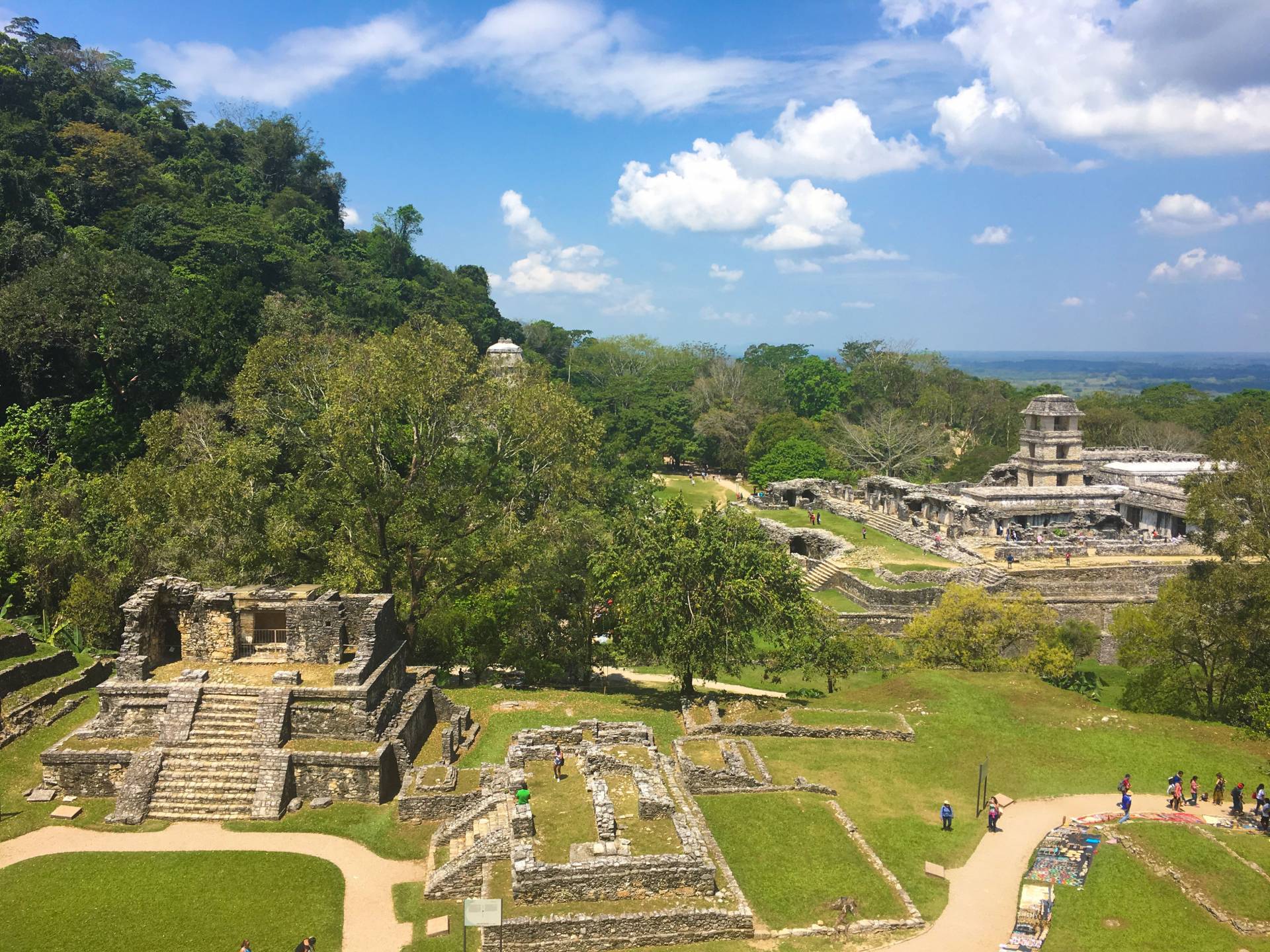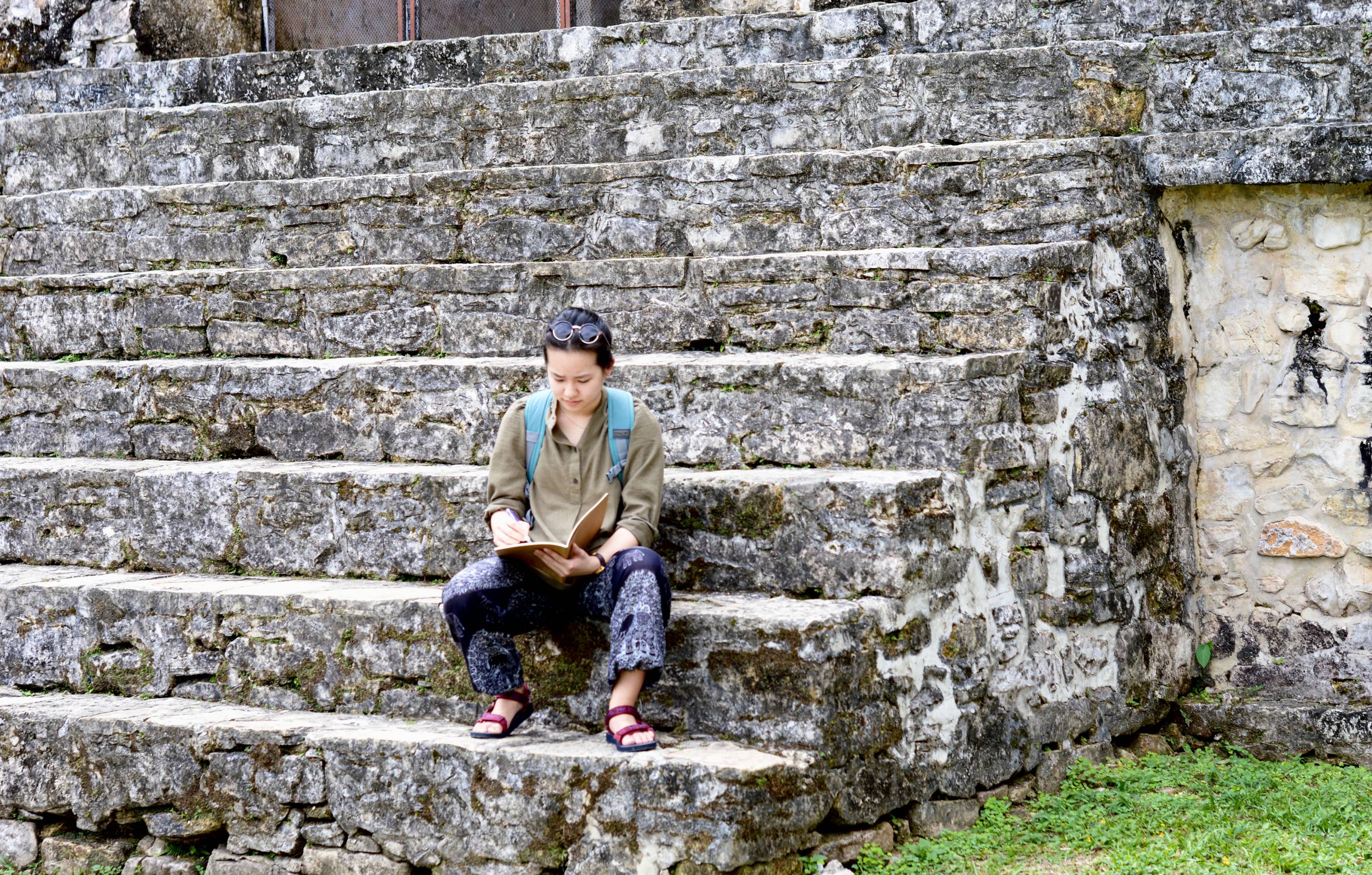
This expansive vista of Palenque is only accessible atop the Temple of the Cross: the site’s tallest step-pyramid and the central structure in its iconic “Cross Group.” In the distance lie the excavated palace as well as the burial site of the Palenque’s famous King K’inich Janaab Pakal. Next to Pakal’s pyramidal tomb is the burial chamber of the mysterious “Red Queen,” whose unidentified body archaeologists found coated in brilliant red cinnabar. Our first archaeological stop in Chiapas, Palenque seemed as vibrant a mystery as the Red Queen, as great a legend as King Pakal, and intellectually speaking, as energizing a challenge as the many stairs leading up to the apex of the Temple of the Cross. Photo and caption by Joani Etskovitz, Class of 2017, English major
Jamie Saxon, Office of Communications
July 10, 2017 noon
This spring, 11 Princeton undergraduates in the course “The Art and Politics of Ancient Maya Courts” had an unusual assignment: deciphering hieroglyphs.
“This course is a deep dive into the art and culture within Maya courts from about 600-800,” said Bryan Just, the Peter Jay Sharp, Class of 1952, Curator and Lecturer in the Art of the Ancient Americas. “While visual culture was our focus, the goal was to provide students with the basic skills to contextualize and understand that material. This included learning to read hieroglyphs as well as exploring archaeological and ethnographic literature in addition to art historical studies,” he said.

Our class stopped in the interior court of Palenque’s palace, and I was drawn to the multiple sets of stairways leading down into the court from all sides. My sketchbook is always with me when I travel so I can jot down notes alongside drawings, and here I made note of the interesting glyphic staircase describing Palenque’s return to regional prominence under the direction of King K’inich Janaab Pakal. The sketch proved quite useful when I referenced the readings on Palenque after the visit, and allowed me to contextualize our visit by orienting my sketch alongside maps of the site.
Caption by Crystal Wang, Class of 2018, economics major; photo by Lacey-Ann Wisdom, Class of 2017, history major
According to Just, the wide variety of the students’ majors helped everyone on the trip “rethink certain aspects of what we saw in new ways based on the students’ particular perspectives and backgrounds.” Whatever their academic concentration, he said he hoped all “gained an appreciation for the richness, sophistication and visual splendor of the ancient Maya. Many came to the course with some basic knowledge of the culture, but I suspect all were rather surprised by many impressive aspects of ancient Maya art.”
